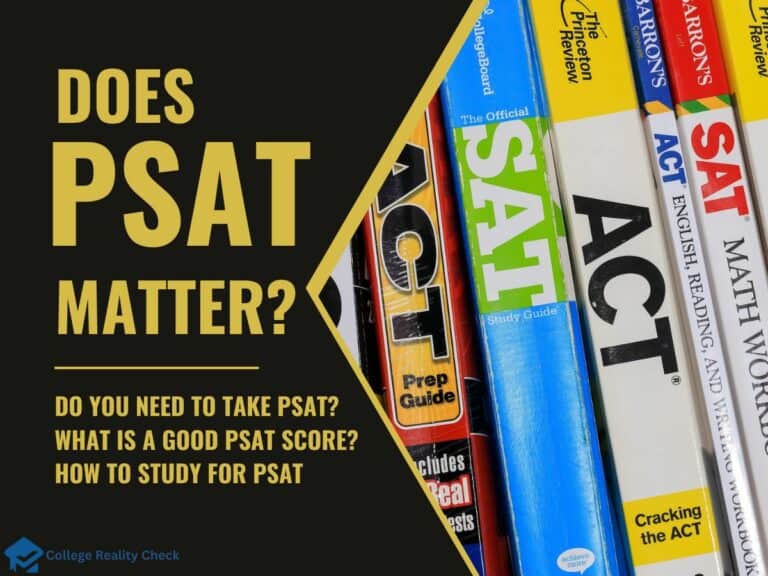Digital SAT vs. Paper Based: Differences and Similarities
You may have to sit down for this news: the SAT is going from paper-based to digital!
But before you scramble for new review materials and testing strategies, read on. In this post, I will talk about all kinds of things about the new SAT format — what’s new, what’s the same, what preparations test-takers need to take.
It was back in 1926 when the SAT came into being. The biggest change in the standardized test happened in 2016 when the score range went from 600 to 2400 to 400 to 1600 as well as when the number of sections went from 3 (math, writing and critical reading) to only 2.
And now, the digitalization of the paper-based examination.
Before I provide all details, here’s the table comparing the key differences between the 2 SAT versions:
| Paper-Based SAT | Digital SAT | |
|---|---|---|
| Score range | 400 to 1600 | 400 to 1600 |
| Calculator | Calculator portion only | Calculator and no calculator portions |
| Venue | Test centers | Test centers |
| Sections | Math and EBRW | Math and reading and writing |
| Test length | 3 hours | 2 hours and 14 minutes |
| Questions | 98 | 154 |
| Passage length | 400 to 750 words | Around 100 words |
| Score report | 2 to 3 weeks | 2 to 3 days |
The differences of digital SAT compared to old format presented below:
Score Ranges Stay the Same
Everyone knows that SAT scores range anywhere from 400 to 1600.
Your composite SAT score is the sum of your 2 section scores: 200 to 800 points in the math section and 200 to 800 points in the evidence-based reading and writing (EBRW).
There’s no need to worry about SAT scores if you are planning to take it again as your digital SAT score will still be comparable with your previous scores on your earlier SATs taken in the traditional manner.
That’s because the digital SAT still uses the same score scale of 400 to 1600 as its paper-and-pencil counterpart.
And not only that: score reports will look pretty much the same.
However, as far as SAT scores go, there’s a major change that the digital SAT brings to the table which will put a smile on the faces of test-takers who can’t wait to get their hands on their scores and cut short the suffering of those who are not that confident with their performance.
And it’s none other than the fact that score reports will be available in no time.
It usually takes 2 to 3 weeks for SAT scores to be released. But when the SAT turns digital, you can get your hands on your SAT score report in just a matter of days — 2 to 3 days tops!
The availability of SAT scores being faster as a result of the standardized test going digital can be especially beneficial for high schoolers applying early to their top-choice schools. And for those who fail to fare well, seeing their scores faster than usual allows them to prepare right away for the next SAT testing date to get better scores.

Wider Calculator Use
One of the most important things SAT test-takers need to bring with them to their respective test centers is a calculator.
Students need not panic if they forget to bring their calculators or the ones they are using die at some point while solving a math problem — it’s possible to solve all math questions on the SAT without a calculator.
As a matter of fact, you can still get a good score or even a perfect score doing math with your fingers, although you will have to work faster and harder.
Failing to stash a calculator in your backpack or bringing a reliable calculator with you on your digital SAT test date should be the least of your concerns. That’s because you will have access to a built-in graphic calculator at all times.
Yes, you read that right — at all times!
The paper-based SAT doesn’t allow test-takers to rely on their calculators as much as they like. They can only use their calculators on the portion of the test labeled math test – calculator.
It goes without saying that it’s only while working on the portion labeled math test – calculator that they can reach for their calculators.
Everything is changed by the digitalization of the SAT — the on-screen calculator can be used at any given time during any of the math portions. So, in other words, the no calculator portion is going to be a goner.
Love the clickety-clack of a traditional calculator?
Here’s great news: students taking the digital SAT may choose to bring and, of course, use their own calculators if they find it better to use those instead of a graphic calculator.

Same Test Centers
If you think that you can take the SAT in the comfort of your home simply because it’s digital, think again. Digital or otherwise, one thing remains true: test-takers can take the SAT only at designated test centers.
This means that although it’s true that shading bubbles is going to be a thing of the past, the SAT School Day, which allows high school teens to sit for the SAT at their respective schools on a weekday, will remain.
It means, too, that you will have to get to the test center by at least 7:45 am to make sure you’re in before the doors close at 8:00 am.
And one more thing before we proceed to the next topic: like when taking the paper-and-pencil SAT, there will also be a proctor with you while you are taking the digital version of the standardized test.
More Testing Equipment
Naturally, because the SAT is going paperless, something will have to take the place of the SAT test booklet and the SAT answer sheet. And it’s none other than a computer that will churn out the questions and take in the answers.
The SAT test center of your choosing will provide the computer you will need.
However, it’s completely up to you to decide whether or not you will bring your laptop — yes, the College Board will allow students sitting for the SAT to use their own equipment.
As a matter of fact, other than a laptop, test-takers may also take the SAT using their tablets — it doesn’t matter if yours is running on the iOS or Android operating system.
But if there’s one device that you will not be allowed to take the digital SAT on, that would be your smartphone.
It’s not uncommon for experts of SAT test-taking to tell students taking the standardized test scores to feel free to leave all sorts of marks, notes and diagrams on their SAT test booklet.
Doing so allows you to keep track of your work and fend off committing stupid mistakes. It also enables you to save time when returning to any questions you have chosen to skip.
In the absence of any scratch paper, your SAT test booklet would make for a great alternative — it’s on your SAT answer sheet where leaving unnecessary markings isn’t allowed.
It’s a good thing that the digital version of the SAT will still allow test-takers to do all those things.
For instance, you will be able to digitally flag questions that you want to skip and return to before the section is complete — after all, answering easy questions first and hard questions last is a great SAT test-taking strategy.
You will also be able to highlight practically any part of a question or passage for better absorption of information.
Thanks to various in-test features of the new digital SAT, you will not be put at a disadvantage if you rely on various strategies when taking paper-based exams — you will still be able to do most of them.

Less Testing Time
Because of the fact that the paper-based SAT takes 3 hours to complete, it isn’t surprising why a lot of students who sit for it suffer from the so-called SAT test fatigue, which is characterized by exhaustion and finding the questions harder than usual.
It’s a good thing that while the SAT test fatigue is a real thing, it has very little to no effect on the test-taker’s performance.
Still, it can be a daunting experience that can put your SAT scores at risk should you allow it to consume you.
High school teens who find the test length of the SAT simply too long rejoice! That’s because the digital SAT will eliminate not only the paper-based SAT test booklet and SAT answer sheet but also the incredibly long test time!
The new version of the standardized test will only take a little more than 2 hours to complete.
So, in other words, you could be out of your assigned test center even before the dreaded SAT test fatigue shows up or comes into full bloom.
Due to this, you can celebrate your hard work and surviving an extremely stressful day without any delay.
Here’s a breakdown of the digital SAT test length by component:
| Component | Total Time Allotted | Minutes per Module |
| Math (2 modules) | 70 minutes | 35 minutes |
| Reading and writing (2 modules) | 64 minutes | 32 minutes |
There are a couple of things that make the paperless version of the SAT shorter:
Fewer Questions
Earlier in this post, I mentioned that SAT scores will remain ranging from 400 to 1600.
Despite this, students taking the new format of the SAT will have to answer fewer questions — from a total of 154 questions in the paper-and-pencil SAT, you will have to answer only 98 questions in the digital SAT.
Like the old SAT, the new SAT will consist of 2 math sections. It will also draw the questions from 4 major areas:
- Algebra and functions
- Data analysis, statistics and probability
- Geometry and measurement
- Number and operations
From 58 questions in the paper-based SAT, the number of questions in both sections of math in the digital SAT amounts to 44 questions only.
But it’s important to note that, while there will be fewer math questions in the digital version of the SAT, the percentage of multiple-choice math questions will slightly drop, too — from roughly 80% to about 75%.
Needless to say, around 25% of math questions in the digital SAT will be student-produced response questions.
Shorter Passages
You can say goodbye to the EBRW of the SAT, which, with the 2 sections combined, takes 100 minutes (or 1 hour and 40 minutes to complete).
That’s because it will be replaced by the simplified reading and writing section, which will only take test-takers 64 minutes to complete — that’s a significant 36% drop in total length!
What’s more, the total number of questions also drops from 96 to 54.
But the good news doesn’t stop there: this time around, students who are taking the digital SAT will come across shorter passages, which makes some common EBRW questions or directions absolutely impractical.
Around 100 — that’s the number of passages in the digital SAT’s reading and writing sections.
Something that asks you to determine which part of the paragraph to place a sentence in, for instance, will no longer be encountered in the digital SAT simply because there’s no room left for multiple-paragraph passages. Or test-takers will never again be asked whether or not to delete a sentence or how sentences can be combined effectively.
Of course, once the paper-based SAT is out, lengthy excerpts of historical documents will be out, too.
Adaptive Testing
And now, we have arrived at arguably the most significant change in the digital SAT: the adaptive testing feature.
As mentioned earlier while we were talking about the test length, the new SAT has 2 sections — the math and reading and writing sections. And each of the said sections comes in 2 modules.
Needless to say, before having access to the second module, test-takers will have to complete the first module beforehand or go past the slated time limit for each module.
The math modules, by the way, are 35 minutes long each. Again, there are a total of 44 math questions. On the other hand, the reading and writing modules, which have a combined 54 questions, are 32 minutes long each.
Simply put, the adaptive testing feature of the paperless SAT determines the difficulty level of the second module according to your answers on the first module — the better you do, the harder the SAT gets!
So, in other words, how you perform in the first math module and first reading and writing module affects the questions in the second math and reading and writing modules.
But that’s okay because you will be rewarded big time for a job well done.
While it’s true that you can expect harder questions in the second module for acing the first module, you can get more points for every correct answer in the second module.
Just a couple of things to keep in mind about answering questions on the digital SAT:
Guessing on SAT test is still allowed
The paper-based SAT and the digital SAT have one thing in common: there’s no penalty for guessing.
Needless to say, it’s a great idea to always answer each and every question even if you need to guess.
Multiple-choice questions on the SAT consist of 5 alternative answers each, which means guessing gives you a 20% chance of getting the correct answer. Meanwhile, you are left with a 0% chance of getting the correct answer for leaving a question unanswered.
Still, you should do your best to answer the questions in the first module of each SAT section accurately so that you can have access to more difficult questions in the second module, thus allowing you to score higher.
Skipping and returning to questions still possible
Again, answering easy questions first is great for managing your time wisely while sitting for the SAT. You will be more than glad to learn that doing this strategy is still very much possible in the digital SAT.
As mentioned earlier, test-takers can flag difficult questions so that they can come back to them trouble-free.
But there’s something you need to know about the new SAT in terms of skipping around: you can only come back to certain questions while you are still in the same module.
Needless to say, you will not be able to answer questions left unanswered in the first module once you are already in the second module.
Is Digital SAT Better Than Old One
Change is not always a good thing.
But given that the digital version of the SAT entails fewer questions and shorter test times while retaining some good old features like calculator use, topics covered and score range, there’s no denying that going paperless can make the SAT a less daunting and exhausting experience for many test-takers eager to have the best college careers.
But it may cause worry in some, too, such as high schoolers who are technologically challenged as well as those who tend to suffer from digital eye strain that comes as a result of extended computer use.
By the way, it’s important to keep in mind that the digitalization of SAT doesn’t mean the complete eradication of its paper-and-pencil counterpart.
Test-takers with special accommodations can still take the standardized test in the usual manner — paper-only, text-to-speech, braille, extended time, etc.
Read Next: Passing the SAT Without Studying
Disclaimer: The views and opinions expressed in this article are those of the authors and do not necessarily represent those of the College Reality Check.





